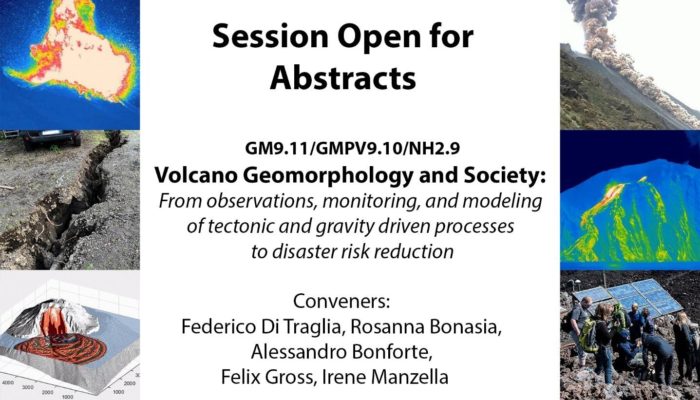
The EGU Abstract Submission Deadline is almost here – only 6 weeks left!!
Probably you are still looking for the right session, maybe one which combines onshore and subaqueous volcanic activity, geomorphology and the impact of the volcanic hazard on local communities.
Well, the GM9.11/GMPV9/NH2 “Volcano Geomorphology and Society: From observations, monitoring, and modeling of tectonic and gravity driven processes to disaster risk reduction” could be your choice!
This session is organised by Federico Di Traglia, Rosanna Bonasia, Alessandro Bonforte, Felix Gross and Irene Manzella. From the convenors:
Volcanic complexes are among the world’s most active geological systems. They represent tectonic and geomorphological systems that are highly responsive to both exogenous dynamics and endogenous forcing. While external (gravitational) processes lead to a shift of material from steeper slopes to areas with lower gradients (erosion and moderate to large-scale mass-wasting), magmatic and tectonic activity can be either constructive (resulting in accumulation) or destructive (triggering caldera collapses and/or flank collapses). Mass reorganization and wasting in volcanic environments, both onshore and in the subaqueous domain, comprises a wide spectrum of phenomena, from widespread spreading and lateral collapse to shallow, localized debris remobilization, which represent a major threat for communities and infrastructure. In many cases, volcano slopes continue below sea level. Those subaqueous volcano flanks are also affected by the building-up and activity of the terrestrial volcano, and can be prone to mass wasting. This wide spectrum of phenomena can have an impact on local and regional communities even far from the eruptive centers, directly or through secondary and cascading events like tsunamis and floods. As these events can rapidly evolve into disasters, the implementation of disaster risk reduction (DRR) strategies is essential for reducing their impact on communities and entire societies. Holistic analysis, monitoring, early warning frameworks, and communication are paramount for increasing societal
awareness and preparedness for volcano-related hazards. These holistic approaches include investigating geomorphological changes and tectonic activity, the detection of which must integrate different methodologies for mapping and monitoring – integrating field-based studies, geomorphological mapping, remote sensing data, geophysical investigations, and/or numerical modeling.
Scientists and non-academic stakeholders working in the fields of hazard mapping, modeling, monitoring, early warning and hazard communication are invited to present their recent advances in research and engagement in dialogue with practitioners and decision makers.We encourage multi- and transdisciplinary contributions that integrate field studies, geomorphological mapping, geophysical investigations, remote sensing, and analytical, numerical and analog modeling of geomorphological and tectonic processes as well as their communication in volcanic areas.
To submit your abstract, follow 👉 this link 👈
